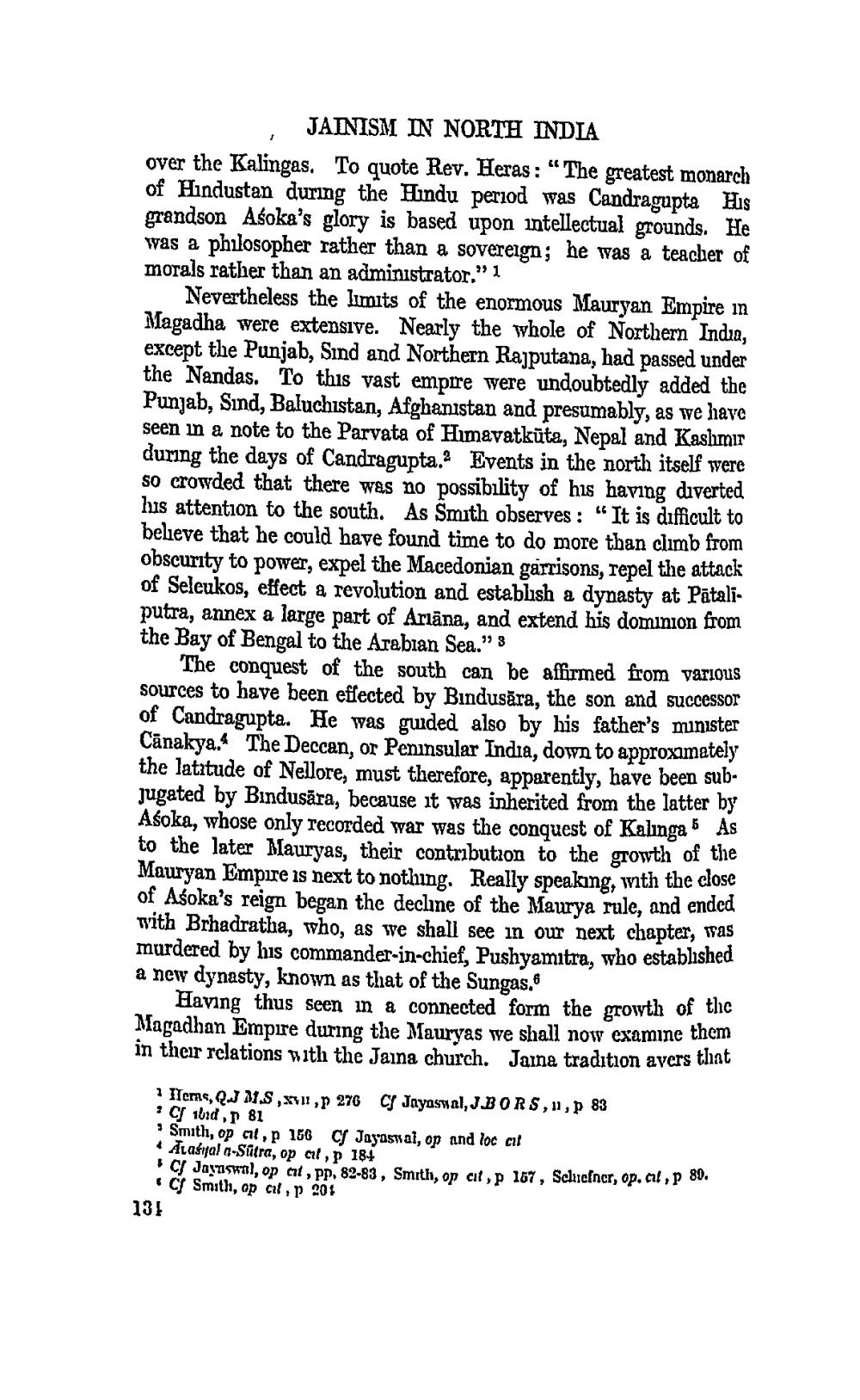________________ ; JAINISM IN NORTH INDIA over the Kalingas. To quote Rev. Heras: "The greatest monarch of Hindustan during the Hindu period was Candragupta His grandson Asoka's glory is based upon intellectual grounds. He was a philosopher rather than a sovereign; he was a teacher of morals rather than an administrator." 1 Nevertheless the limits of the enormous Mauryan Empire in Magadha were extensive. Nearly the whole of Northern India, except the Punjab, Sind and Northern Rajputana, had passed under the Nandas. To this vast emptre were undoubtedly added the Punjab, Sind, Baluchistan, Afghanistan and presumably, as we have seen in a note to the Parvata of Himayatkuta, Nepal and Kashmir dumng the days of Candragupta. Events in the north itself were so crowded that there was no possibility of his having diverted his attention to the south. As Smith observes: "It is difficult to believe that he could have found time to do more than climb from obscurity to power, expel the Macedonian garrisons, repel the attack of Seleukos, effect a revolution and establish a dynasty at Pataliputra, annex a large part of Arlana, and extend his dominion from the Bay of Bengal to the Arabian Sea." 3 The conquest of the south can be affirmed from various sources to have been effected by Bindusara, the son and successor of Candragupta. He was guded also by his father's minister Canakya. The Deccan, or Peninsular India, down to approximately the latatude of Nellore, must therefore, apparently, have been subjugated by Bindusara, because it was inherited from the latter by Asoka, whose only recorded war was the conquest of Kalinga As to the later Mauryas, their contribution to the growth of the Mauryan Empire is next to nothing. Really speaking, with the close of Asoka's reign began the decline of the Maurya rule, and ended with Brhadratha, who, as we shall see in our next chapter, was murdered by his commander-in-chief, Pushyamitra, who established a new dynasty, known as that of the Sungas. Having thus seen in a connected form the growth of the Magadhan Empire during the Mauryas we shall now examine them in their relations with the Jaina church. Jaina tradition ayers that Iicras, Q.J DI. S , 276 Cf Jayaswal, J.BORS, 11, 83 : CJ 16d. r 81 * Smith, op cit, p 156 CP Jayastal, op and loc at * Atasiala-Sutra, op al, P 184 J Jayaswal, op cit, pp. 82-83, Smith, op at,p 157, Seluener, op.cil, p 80. . CJ Smith, op cul,p 205 131




